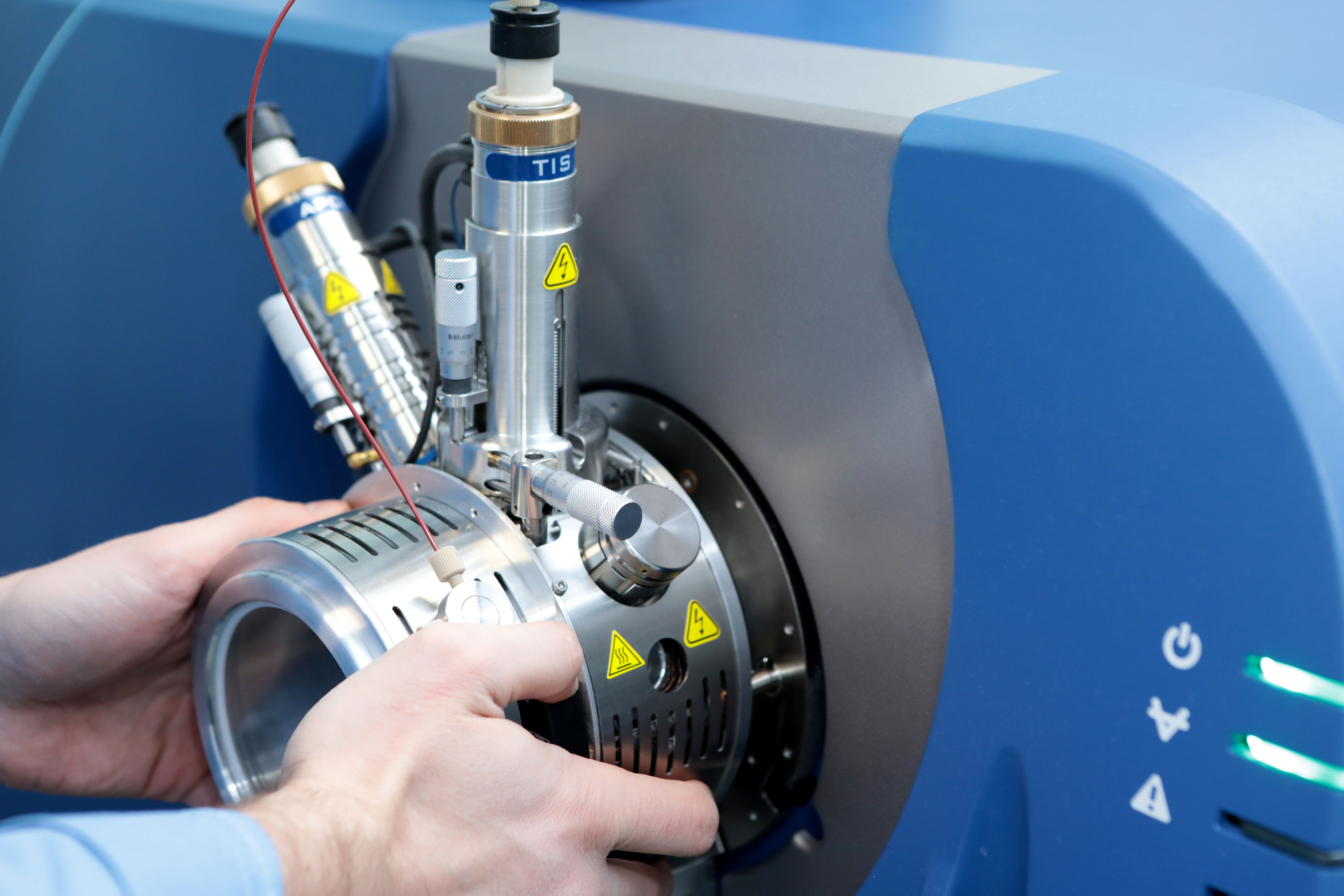Direct Solid-Phase Microextraction-Mass Spectrometry Advances Green Analytical Chemistry
Researchers investigated the benefits of the efficient and environmentally friendly approach of direct solid-phase microextraction-mass spectrometry (SPME–MS) for rapid analysis.
Solid-phase microextraction (SPME) has emerged as a simple yet highly effective sample preparation technique. In a recent journal article published in TrAC, Trends in Analytical Chemistry, authors Wei Zhou, Hasan Javanmardi, and Janusz Pawliszyn, all from the Department of Chemistry at the University of Waterloo, Ontario, Canada, and Martyna N. Wieczorek from the Faculty of Food Science and Nutrition at Poznań University of Life Sciences in Poland, proposed the combined method of direct solid-phase microextraction-mass spectrometry (SPME–MS), which they said promises rapid analysis while maintaining a commitment to green chemistry (1).
Adjust the mass spectrometer. The man analyzes the device for determining the masses of atoms. Device for the pharmaceutical industry. Ionic source of mass spectrometer. | Image Credit: © neznamov1984 - stock.adobe.com

As a standalone method, SPME has gained widespread adoption because it is versatile and eco-friendly. It is employed across various applications, offering an alternative to traditional sample preparation methods that often involve copious amounts of organic solvents.
The core principle of SPME revolves around the use of a solid sorbent phase, typically a fiber, coated with a selective extraction phase. This fiber is exposed to a sample, allowing the analytes to partition between the sample matrix and the extraction phase. Subsequently, the analytes are desorbed from the fiber and introduced into an analytical instrument for detection.
What sets SPME–MS apart is its ability to directly interface with mass spectrometry, which is known for its sensitivity and specificity. The direct coupling of SPME with MS eliminates the need for additional steps in the workflow, such as liquid chromatography (LC) or gas chromatography (GC), which are often used in conjunction with SPME. As a result, SPME–MS significantly reduces analysis time.
One of the most notable advantages of SPME–MS is its rapidity of analysis. Researchers have achieved analysis times as low as 10 seconds per sample, making it an attractive choice for high-throughput applications (1). This swiftness is particularly valuable in fields where timely results are crucial, such as environmental monitoring, food safety, and clinical diagnostics.
Moreover, SPME–MS is greener than SPME–LC/GC–MS methods. The reason, according to the researchers, lies in the considerably lower consumption of organic solvents or gases during the analytical process (1). While regular SPME already minimizes the use of these chemicals, SPME–MS further reduces their environmental impact, with only a few microliters of solvent per sample required.
The article provides a comprehensive overview of various SPME–MS direct coupling techniques (1). It delves into the technical intricacies of each approach, shedding light on the innovations that have made rapid analysis possible. These developments have not only streamlined analytical workflows but have also broadened the range of applications where SPME–MS can be applied effectively.
SPME–MS holds promise in fields where real-time or near-real-time analysis is essential (1). For example, in environmental monitoring, it enables swift detection of pollutants in air and water. In food safety, it can expedite the identification of contaminants or adulterants in food products. In clinical settings, SPME–MS can play a vital role in rapid screening of biomarkers or pharmaceutical compounds.
This article was written with the help of artificial intelligence and has been edited to ensure accuracy and clarity. You can read more about our policy for using AI here.
Reference
(1) Zhou, W.; Wieczorek, M. N.; Javanmardi, H.; Pawliszyn, J. Direct Solid-Phase Microextraction-Mass Spectrometry Facilitates Rapid Analysis and Green Analytical Chemistry. TrAC, Trends Anal. Chem. 2023, 166, 117167. DOI: 10.1016/j.trac.2023.117167
New Method Explored for the Detection of CECs in Crops Irrigated with Contaminated Water
April 30th 2025This new study presents a validated QuEChERS–LC-MS/MS method for detecting eight persistent, mobile, and toxic substances in escarole, tomatoes, and tomato leaves irrigated with contaminated water.

.png&w=3840&q=75)

.png&w=3840&q=75)



.png&w=3840&q=75)



.png&w=3840&q=75)


